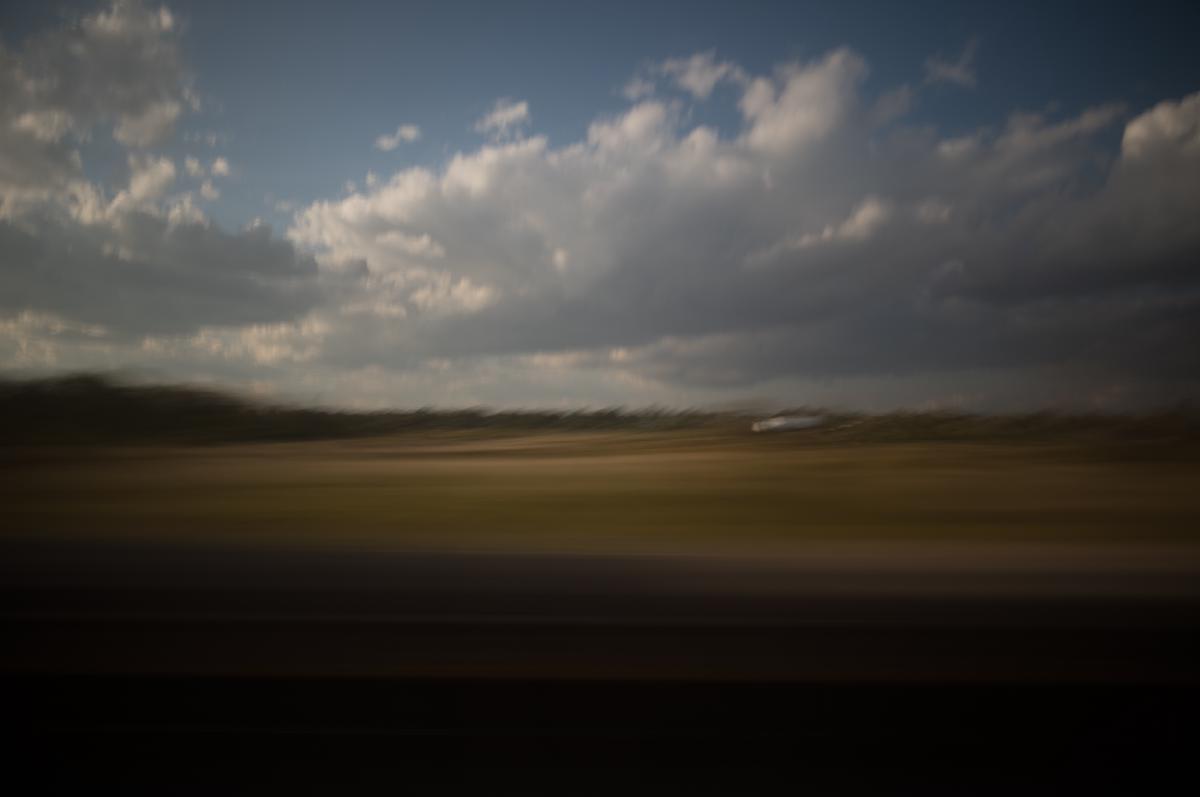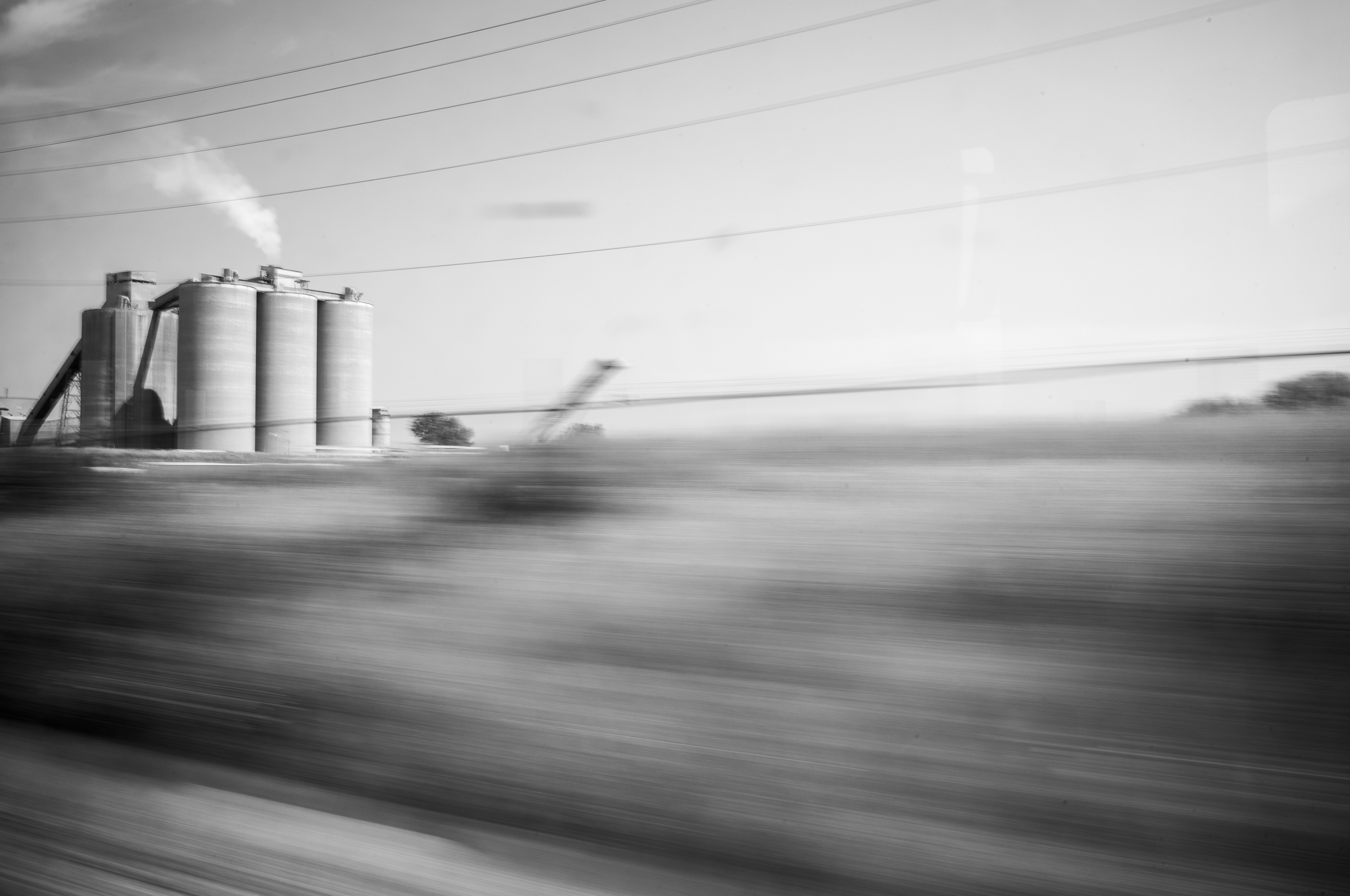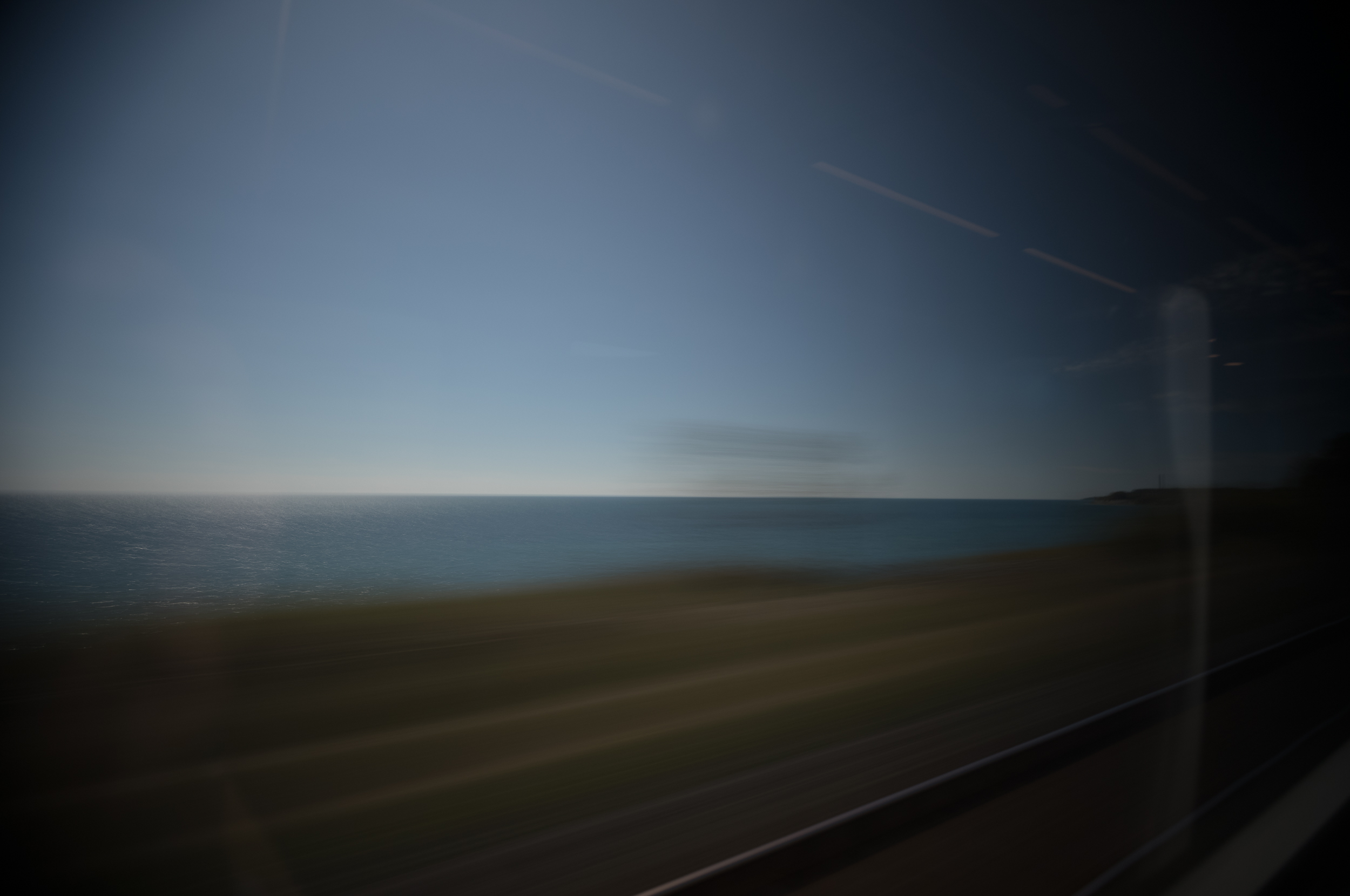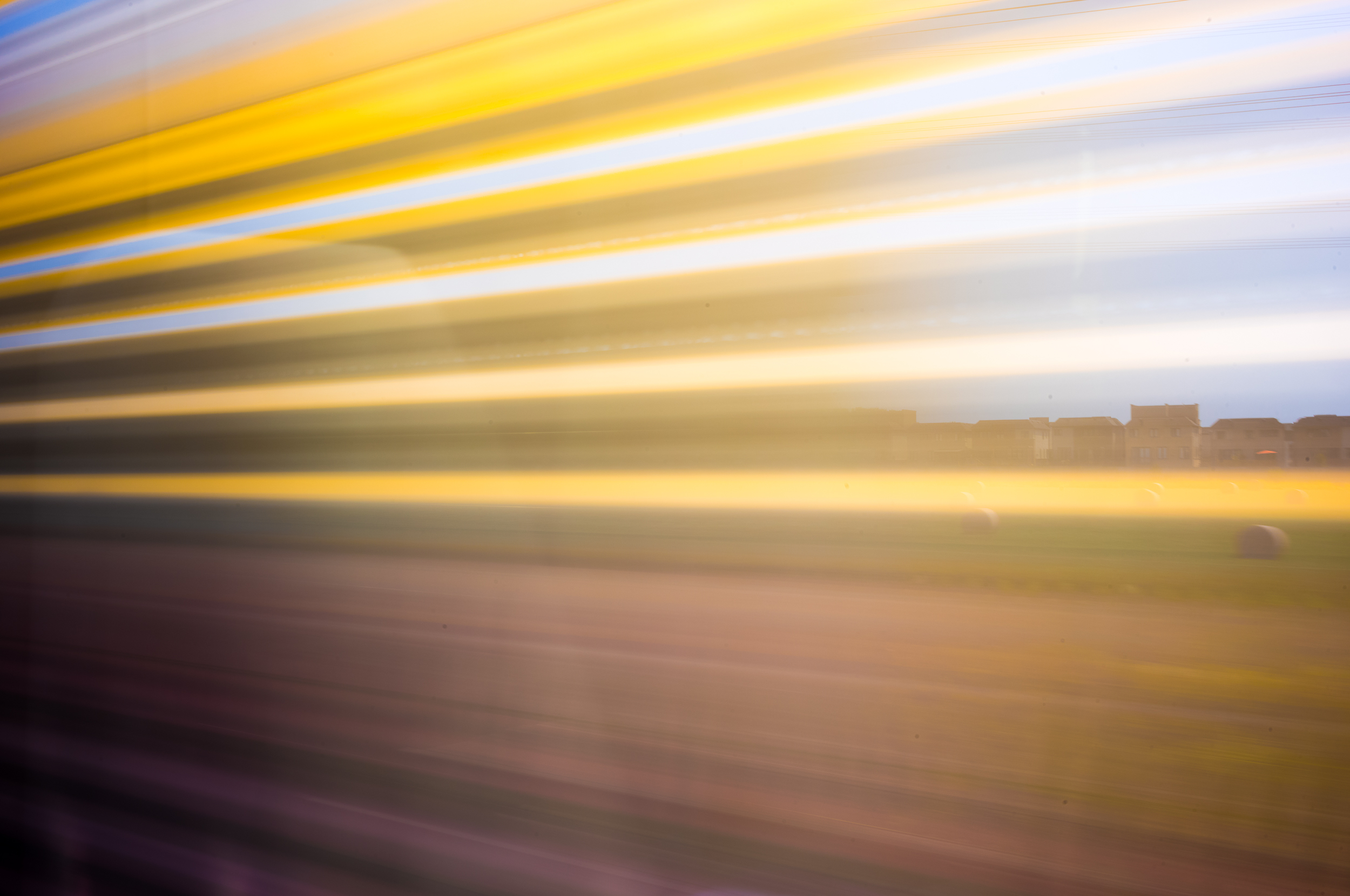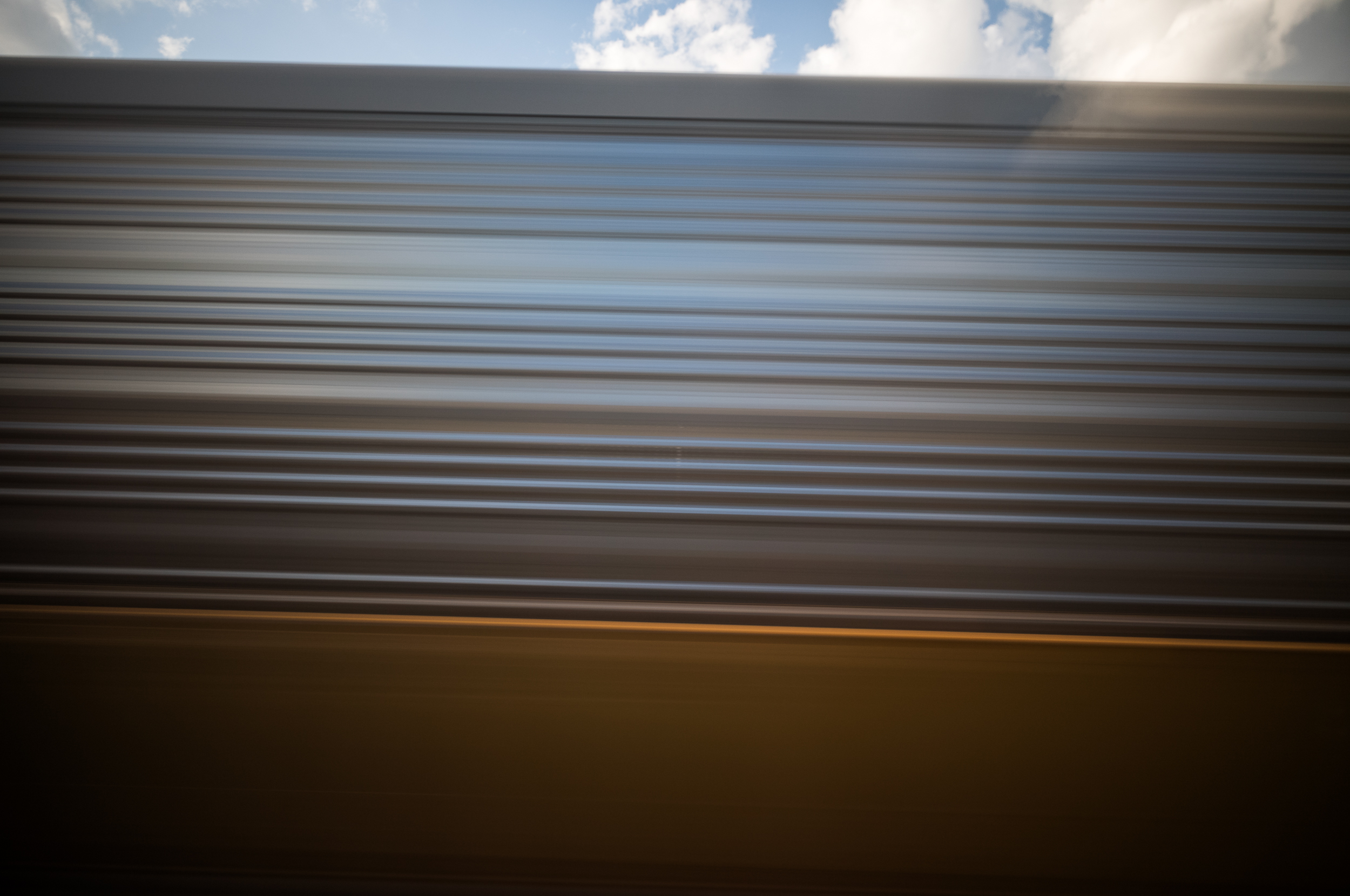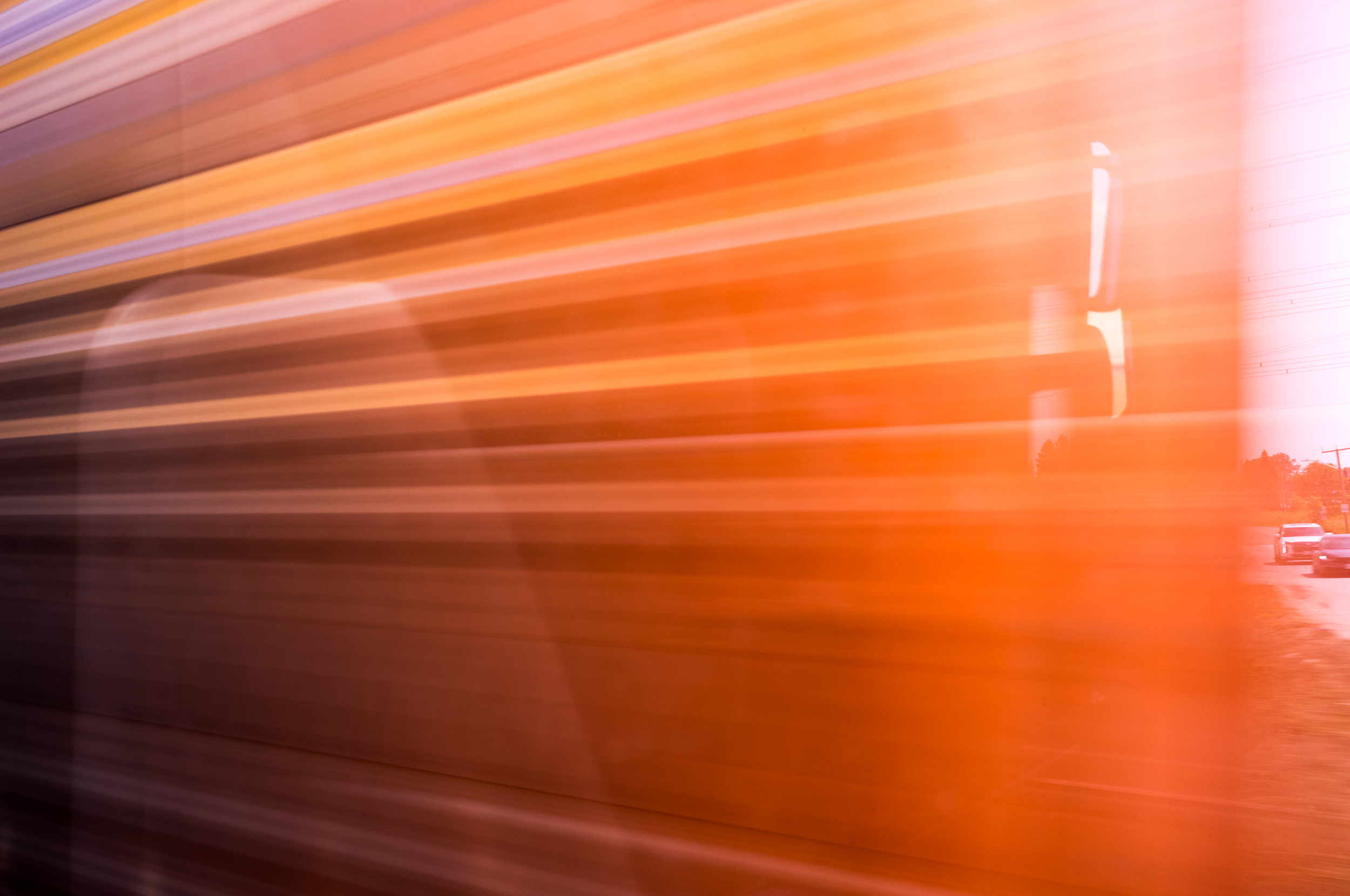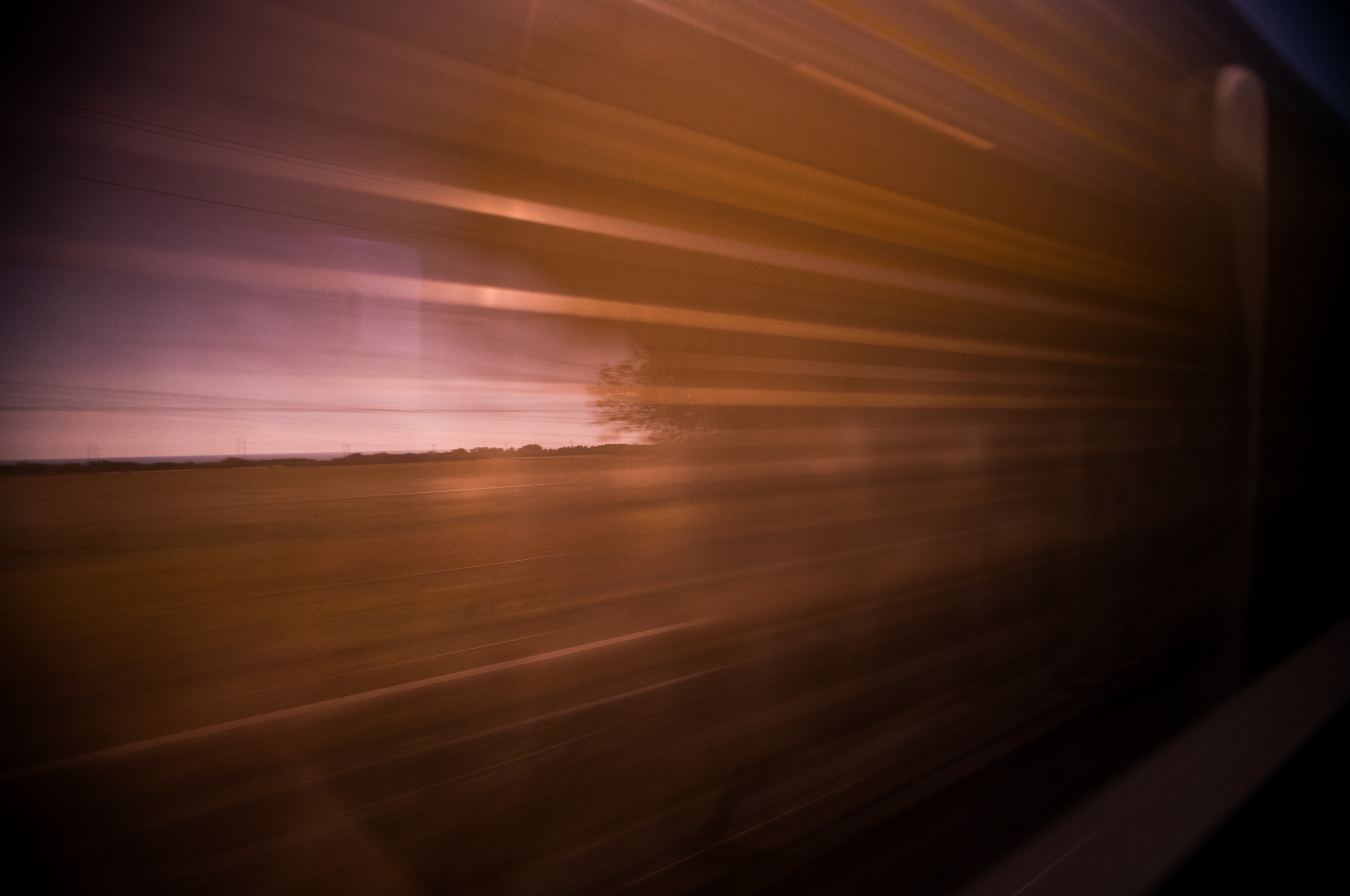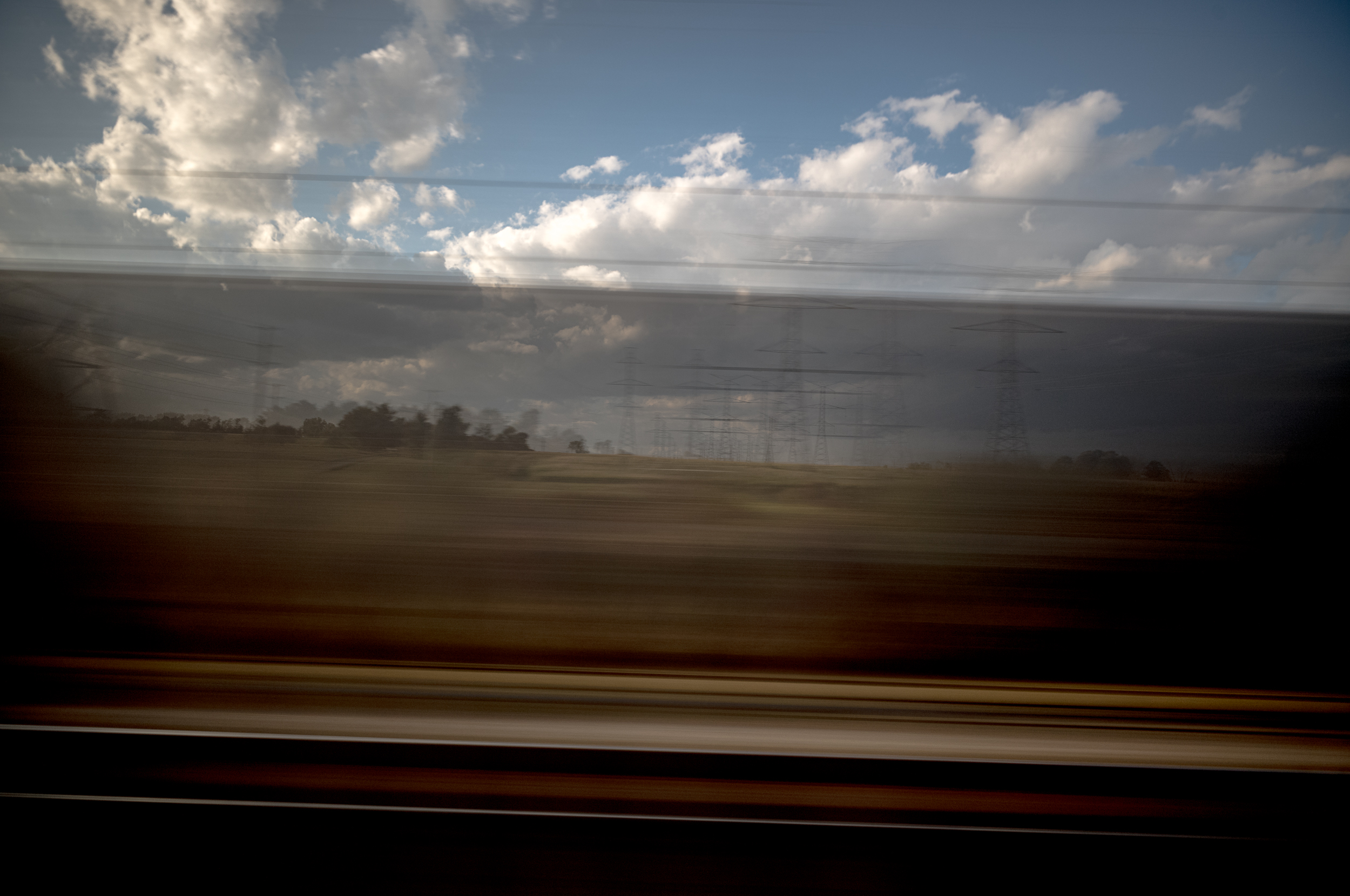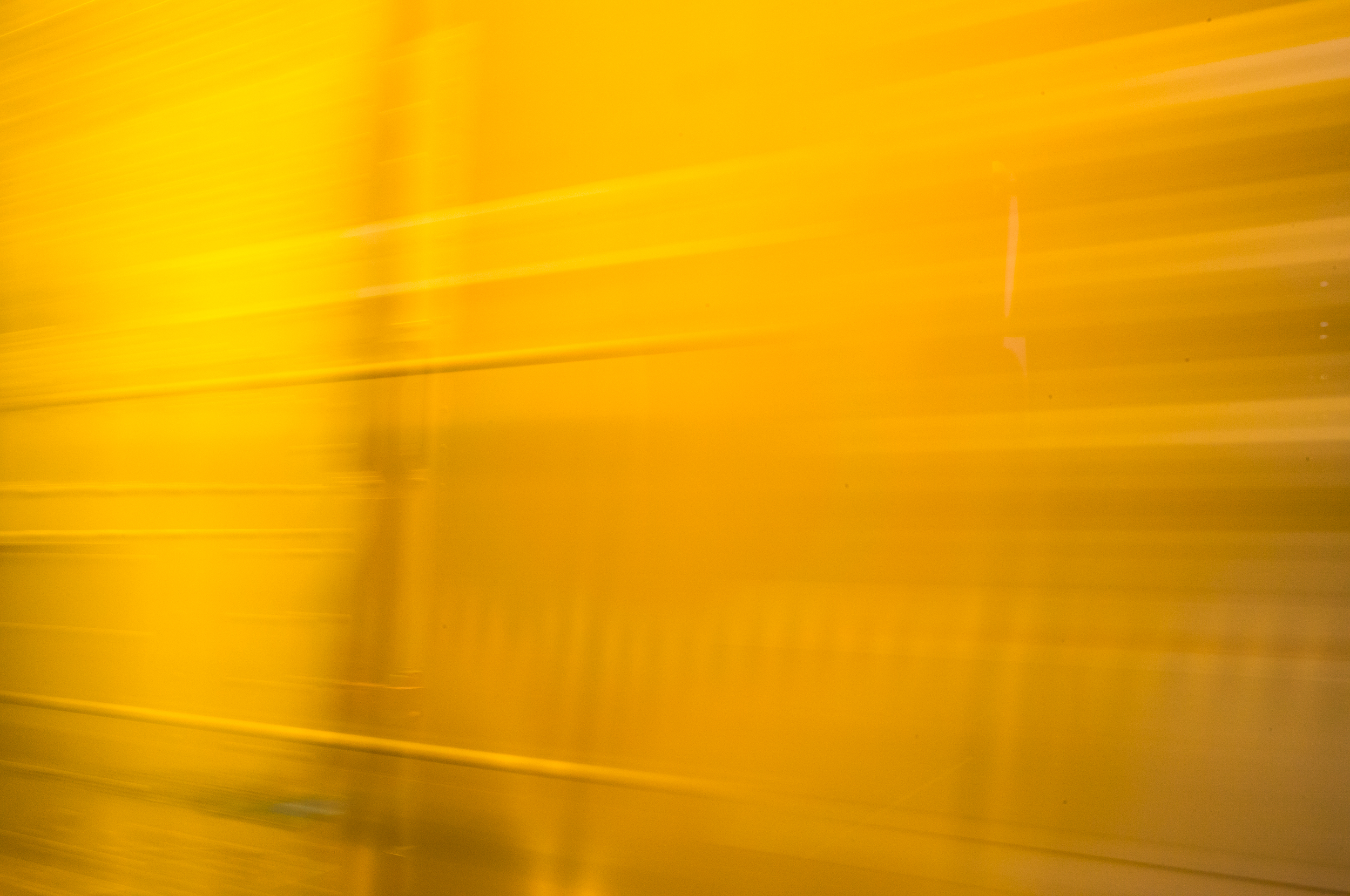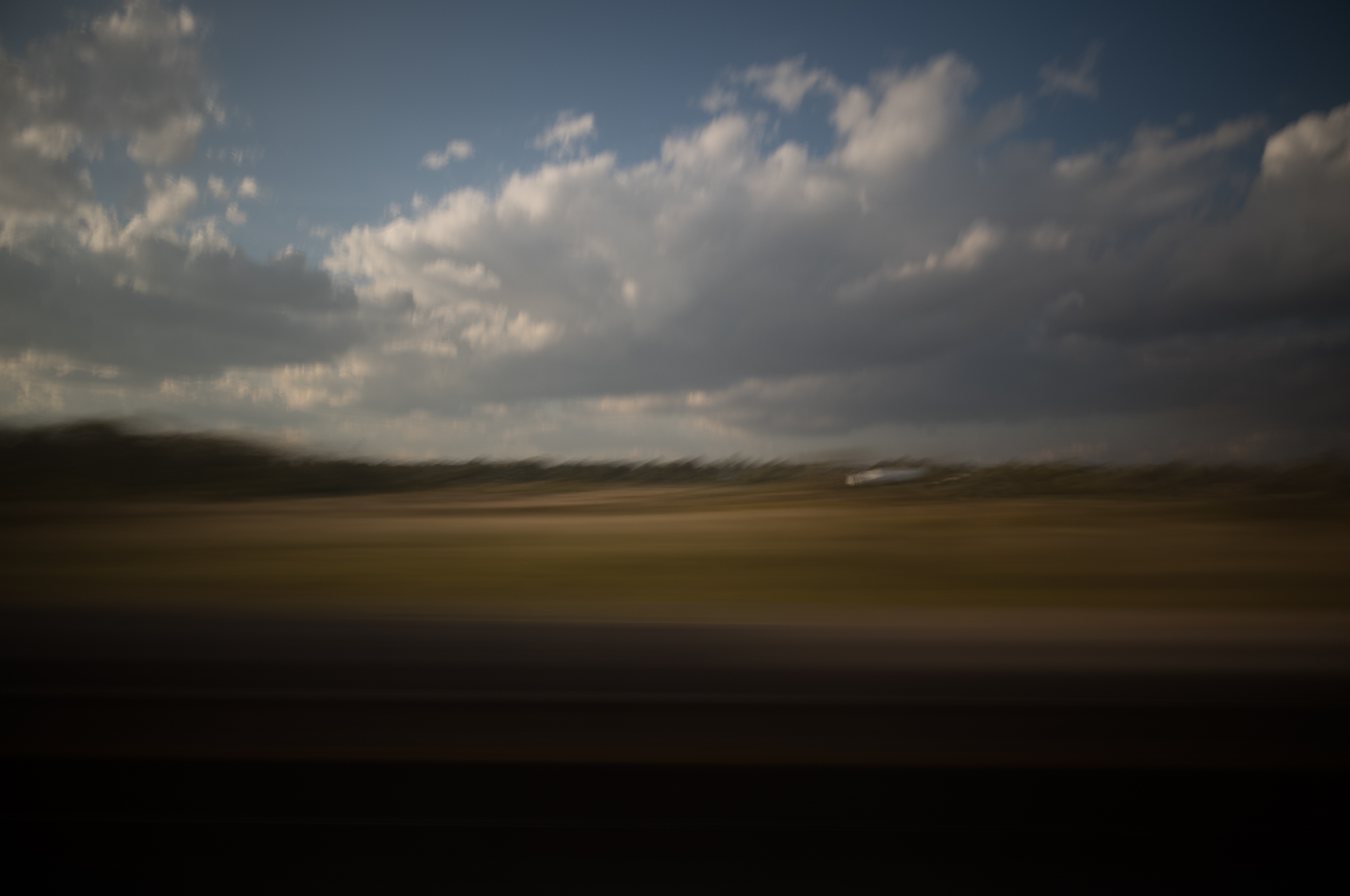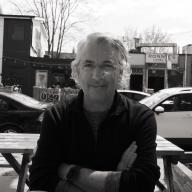He does not say a word. He makes eye contact with the woman sitting in the isle seat. She puts away her laptop and gets up so he can take his seat by the window. He does not like working on the train, just wants to listen to music and look out the window. Unlike an airplane, the windows are big and there is a lot to see. Unfortunately, unlike an airplane, some of the seats face backwards and today is a backwards day. You can’t see what’s coming, just what’s going. The woman sits down and pulls the laptop back out. He reaches down into his bag and pulls out his noise-cancelling headphones…and his camera. The train slowly starts moving.
Photography is about balance. In order to get “the correct” exposure, you need to select the correct shutter speed, aperture, and film speed (or ISO). Each of these exposure controls will have an impact on the final image. They are tightly coupled and balanced in the sense that moving one control to achieve a desired effect will often mean adjusting one (or both) of the others to compensate for that change. This can often result in something that is undesired, or maybe you get exactly what you want.
For example, allowing less light through the aperture means that you will have a deeper depth of field so more of the foreground and background will be in focus. The tradeoff is that you will now have to make the shutter speed longer to compensate for less light coming into the camera. This is fine but if the shutter is too slow, you may wind up with a blurry image due to moving the camera (most of the images in this article have a shutter speed of 1/4 or 1/2s - a lot can happen in 1/2 second). You can compensate for this by increasing the ISO (assuming it’s a digital camera) so the sensor in the camera captures the image faster, so now you can make the shutter faster so you don’t have to worry about camera shake. Unfortunately, increasing the ISO will make your picture more grainy so you will lose fine detail. BUT some people like that grainy effect, especially in black and white, so now you are bumping the ISO, slowing the shutter, pulling hair out, etc.
If you are not pulling your hair out, you might be doing it wrong
Modern trains really do not have that clickity clack sound commonly associated with train travel. The keyboard on the woman’s laptop makes up for all the effort teams of acoustic engineers put into making the interior of the train as quiet as possible. Fortunately, he has his noise-cancelling headphones. As the train gains speed, the scene outside is starting to blur.
At 150 km/hour, the scene outside is moving right along. It’s easy to see things in the distance but trees and shrubs close to the train are just smudges, like an impressionist’s oil painting, you can see the shapes but the precise details are lost in the texture of the paint or, in this case, in the blur of the speeding train.
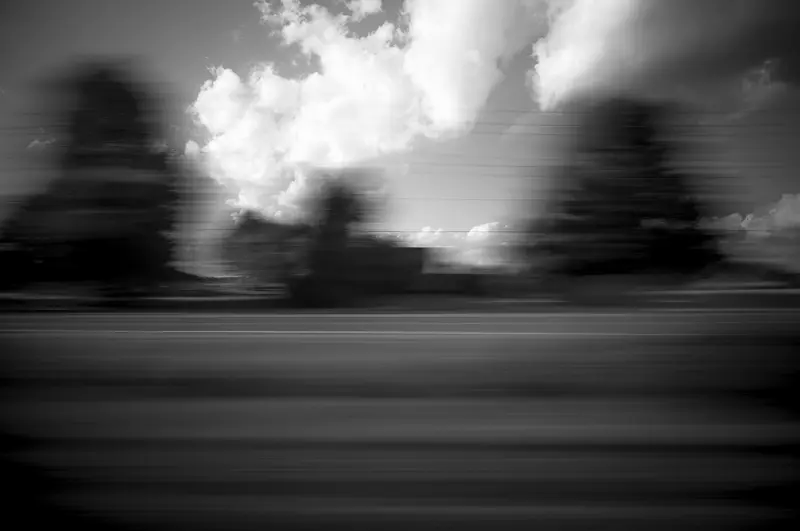
This is why photographers using manual cameras are often futzing around with all these settings. You could just let the camera do it but, let’s face it, do you really want some engineer that programs cameras to decide all of this for you? Essentially, just letting the camera do it really just means that you will take the exact same shot as the person standing beside you with the same brand of camera with the caveat that fortunately, cameras do not have auto-composition…yet. The correct exposure though, is up to the photographer. While many camera manufacturers build cameras that always give you a “perfect” picture, many photographers prefer to break those rules and do it their own way.
…and today is a backwards day. You can’t see what’s coming, just what’s going…
Most people think of photography as static. An image is captured and stored on film or on the sensor in a digital camera where it can be processed and displayed later on a print or on a screen. The image can be anything, something you want to remember, something you want to share with your friends or even the rest of the world, or maybe it’s just something for you? Ultimately, it’s literally a snapshot of a subsecond in time. But what happens if you want to capture something for a full second? If you are using a video camera you would typically capture 30 frames in a second. You could overlay all of those pictures on top of one another and see what it looks like. Or you can really slow the camera down by letting in a very small amount of light, lowering the ISO as much as possible, and maybe even put a neutral density filter on the lens (A neutral density filter is kind of like putting on sunglasses). Doing things like this allows you to decrease the shutter speed. Less light coming into the camera means that we need to keep the shutter open longer to get enough light in to expose the scene. Now just add that extra dimension in, the fact that the light you are letting in is constantly changing.
At this point, the woman stops typing and asks the man what he is doing, what kind of camera is that, etc. He tries to show her some of the images on the back of the camera but they are small, in black and white, and honestly pretty blurry. But, as he flips through the images, she starts to understand that his project is not just taking some snapshots of the trip, but perhaps something a bit more interesting. She squints her eyes and looks out the window, at the scene flying by, and makes the connection…“That’s pretty cool!”
Yes, it is kinda cool. The fun part about an exercise like this is that you really do not have a clue about what you are going to wind up with. It’s not like you are going to have a lot of time to set up each shot because the scene outside is moving very quickly which means that the amount of light available can change rapidily. And it’s not like you can use the automatic features of the camera because you are really fighting with what the camera thinks is the perfect shot. One strength of the camera though is that it can still capture a lot of detail that you can’t see until you bring the images into image processing software and adjust brightness and contrast settings.
The idea though, is that the camera does not get in your way. Yes, you have to know what you are doing to make it work the way you want to, but the camera will do exactly what you want it to do, no more, no less.
